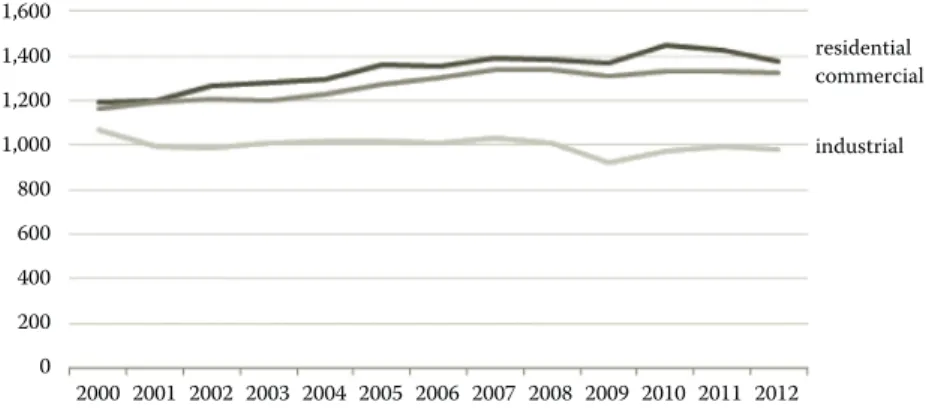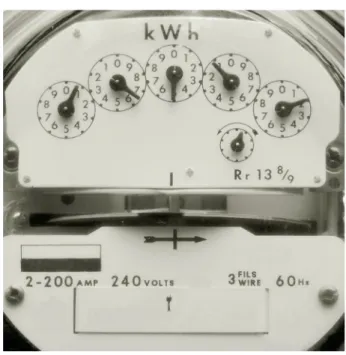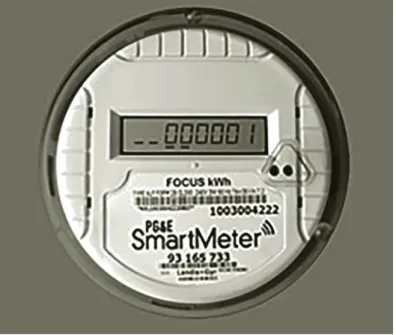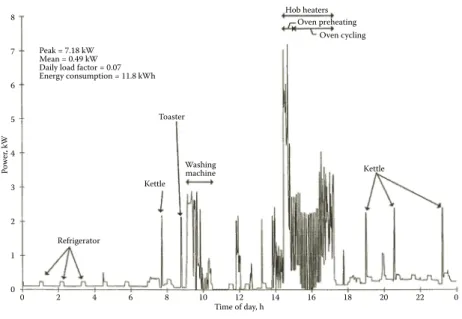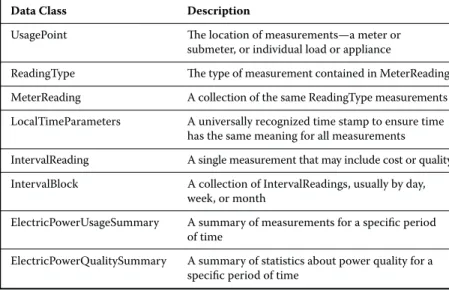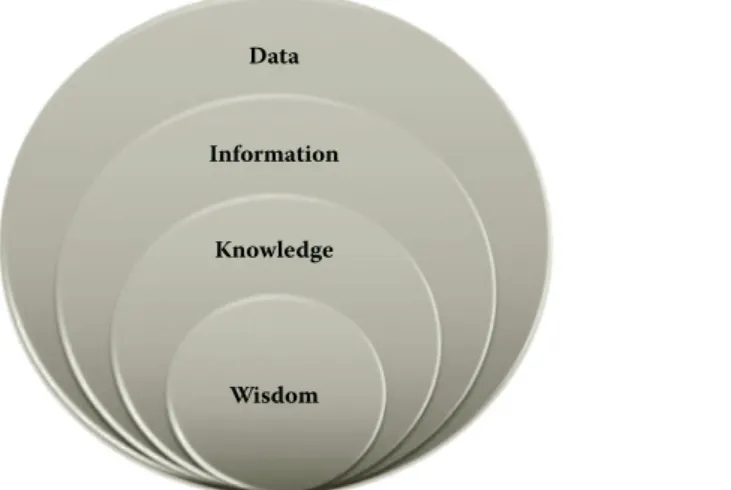Smart Grid Cybersecurity Guidelines: Volume 2 – Privacy and the Smart Grid as Draft 2010. A smart grid consists of multiple machine-to-machine (M2M) applications that are typical of the Internet of Things (IOT).
AND P RIVACY
Electricity has a special distinction in the Smart Grid.* Consumers can become prosumers - producing consumers - of electricity. All data collected from the Smart Grid and the Internet of Things can become "big data" and characterized by the four Vs: volume, vari.
From the Smart Grid Dictionary: “The ability for residential and C&I (commercial and industrial) customers to generate electricity and sell excess power back to the utility, essentially offsetting their future utility power purchases. The first reason concerns Demand Response (DR) programs.* The most common manifestations of today's DR programs are full.
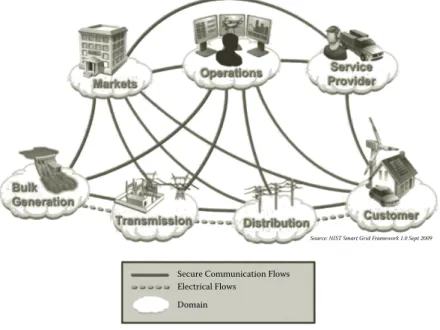
Privacy limits the release of information to the minimum reasonably necessary for disclosure purposes. In some parts of the world, business information about employees is also considered personal data. One of the best and easiest ways to reduce privacy risks is to collect and store less personal data.
Every organization needs to be aware of the data it collects or creates that may be linked to individuals. Secure Combinations of measurement data analyzed for a single purpose could reveal random unexpected information about occupants, which is then used to intrude on occupant privacy. It is important to note that any potential privacy risk can be sufficiently mitigated by appropriate technical, administrative and physical controls.
The Smart Grid is only smart due to the deployment of a wide range of sensors and actuators for remote monitoring and control of equipment combined with a variety of communication networks. Data processor: An organization or person that processes data on behalf of the data controller.
S MART M ETER D ATA
James Kirtley and Thomas Sterling of the Massachusetts Institute of Technology (MIT) filed a patent application for smart meters in November 1979 and received a patent in February 1982.* The patent was for a meter that would calculate the price of energy consumed over a short period of time. time intervals. Kirtley told Rebecca: "Industry people uniformly said we were idiots because they thought it [the meter invented] wasn't useful." As we can see now, it took close to 30 years before a smart meter would be practical and deployed for private use. Smart meters can also be enabled to communicate on the "other side of the meter" or inside a home or business.
Green Button Initiative Uses Purpose and Use of Smart Meter Data.‡ The goal of this 2011 federal government initiative is to provide utility customers with easy access to their electricity usage data. Green Button Connect is an extension of the original White House Green Button initiative.* Project Connect encourages companies to make it procedurally and uniformly easy for consumers to authorize the release of data to selected third parties. In summary, smart meters and their AMI networks collect and transmit energy usage data and voltage measurements.
Meter Data Management Systems (MDMSs) are specialized software applications that manage the volumes of data originating from smart meters. Smart meter data has many privacy protections, with a number of states clearly stating that the consumer is the data owner of the data coming from the smart meters.

HEMSs often start out as a software solution that controls a PCT, as heating, ventilation and air conditioning (HVAC) is the largest use of electricity or gas in the average residential building.* The solution. According to Chris Kotting, Executive Director of the Energy Information Standards Alliance (EIS Alliance), “Developing a common expression of fundamental or abstract information for Home Energy Management Systems (HEMS) is critical to manu. See "HEMS Vendor Taxonomy" with a wide range of possibilities at http://www.greentechmedia.com/research/report/.
A HAN could be a pass-through device for "on the other side of the meter" communications, meaning it could serve as an interface between ESP gadgets or equipment and smart devices in the home. However, we had to feel sorry for the contact center agent – she was clearly not trained to deal with these issues and had no resources to turn to.† The author of the study, Christine Hertzog, asked about obtaining a copy of the data privacy policy. for one of its home automation services, which included home energy management. The privacy risks of a building with only two or three tenants would be greater because there would be fewer tenants involved - the ability to perhaps even guess intuitively about a unit's energy usage data would be much easier.
Finally, there is equipment that is in a utility closet or basement or outside - the heating, ventilation, air conditioning. For the first scenario, it could be a HAN controller, and in the second scenario, it could be a Wi-Fi router or hub provided by a telephone or cable service provider, or even a device manufacturer.† The connected smart devices (in the future, to include EVs, energy storage and private generation assets such as rooftop solar in this category) communicate with this hub or gateway, which in turn manages the connection to the utility or another supplier or energy services promoter.
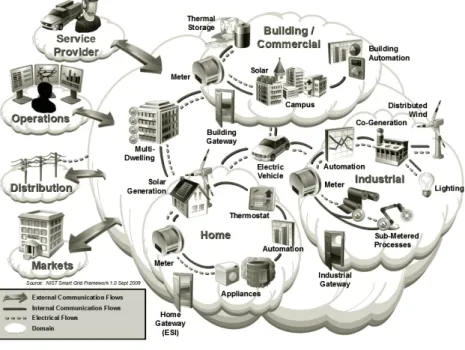
E LECTRIC V EHICLES , C HARGING S TATIONS ,
Whether part of the ChargePoint America program or not, the typical process that ChargePoint created is the EV. Companies that want to become the service stations of the future: Who charges, when and how long to charge, where to charge. When a credit card payment is possible, implementing the controls required by the Payment Card Industry Data Security Standards (PCI-DSS) helps to ensure the communication and handling of card and owner data.
This gets to one of the most important points about EVs, the smart grid and privacy. This may be true in some states, but the registered customer of the meter behind the charging station is usually considered to be the owner of the energy usage data produced by that meter. Charging stations that support point-of-sale (POS) transactions are governed by the bank's financial data privacy policy and the applicable industry.
Charging stations that support any type of electronic authentication without payment are generally subject to the published privacy policy of the EVSE owner or sales vendor. Today, you can make cell phone calls in your hometown and on the other side of the country.
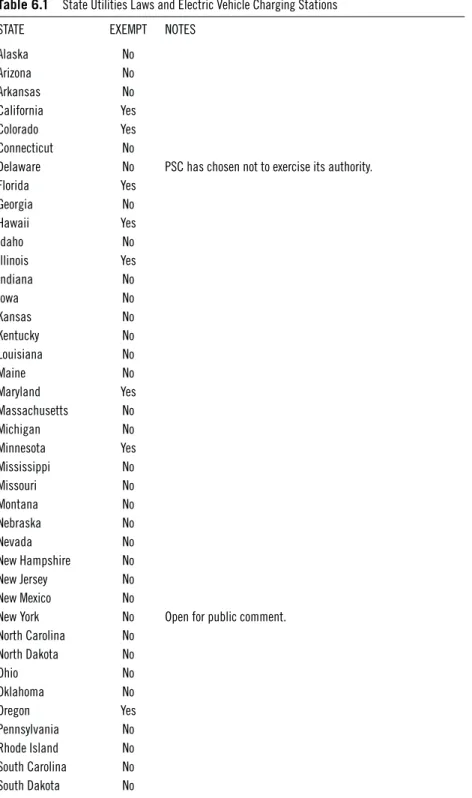
M ITIGATING P RIVACY R ISKS
Many different types of privacy risks within the Smart Grid are described at a high level throughout this book. He suggests that Smart Grid data could be used to see how often a home treadmill was used. Conduct an initial PIA before making the decision to deploy a service, utility or participation in the Smart Grid.
The following is a good representation of some of the groups that have developed a wide variety of privacy-related standards and guidelines on various topics that entities in the Smart Grid can use to help mitigate their privacy risks. Department of Energy, Office of Electricity Delivery and Energy Reliability (DOE OE) hosted the Smart Grid Privacy Workshop to facilitate. For privacy policy templates specific to utilities and other Smart Grid entities, see http://www.privacyprofessor.org.
Privacy use cases reflect the electricity value chain and the impacts that smart grid technologies, new policies. Through hundreds of Smart Grid meetings the authors have attended over the years, one of the most common methods.
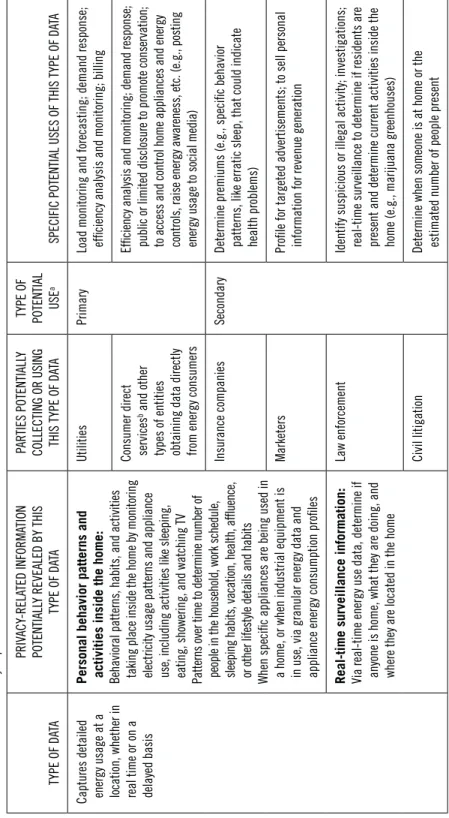
OF Y OUR P RIVACY
When considering privacy within the Smart Grid, the data subject is the person over whom energy is consumed or produced. The employees of controllers with access to the data are considered data processors. In the Smart Grid industry, the data processor is commonly referred to as the data controller.
To be more specific, the employees of the data repositories are the data controllers (data processors) because they are the ones inside the data. Contract employees with direct access to the energy data or personal data are also data controllers (data processors) for the data repositories (data controllers). Because you cannot expect the data protectors who collect your energy data and personal information to always have all the necessary security measures in place.
Data controllers and data processors that receive and access your energy data and personal information rely on privacy use cases to identify where risks exist and document the best controls to mitigate identified risks. Data controllers, as well as their data processors, must have in place all appropriate security and privacy controls that are listed in "Privacy Options and Responsibilities for the Data Subject".

T RANSACTIVE E NERGY
We will briefly examine the three main drivers before exploring the privacy aspects of the evolution from today's grid to a smart grid that includes transactive energy. Remote monitoring and control smart grid technologies, advanced analytics and robust communication networks enable the transition to transactive energy at all points of the value chain from production to consumption and production. These regulatory policies are important and novel, making the policy a revolutionary driver in building an electricity value chain based on transactive energy concepts.
Since the Smart Grid enables electricity consumers to become electricity producers (beneficiaries), the Internet democratizes the investment market – just as transactive energy democratizes the electricity market. One such service is provided by a company called Mosaic.† The company finds and qualifies solar projects and connects investors with them. It is also a sign of the times how financial motivations can serve as drivers for DER investments and create more participants in transactive energy markets.
The transactive energy market will evolve over time and we will examine the first steps with commentary on the energy production data generated. As noted earlier, the accurate metering of electricity fed back to the grid would come from a utility-supplied meter - the ultimate buy-and-sell cash register.

